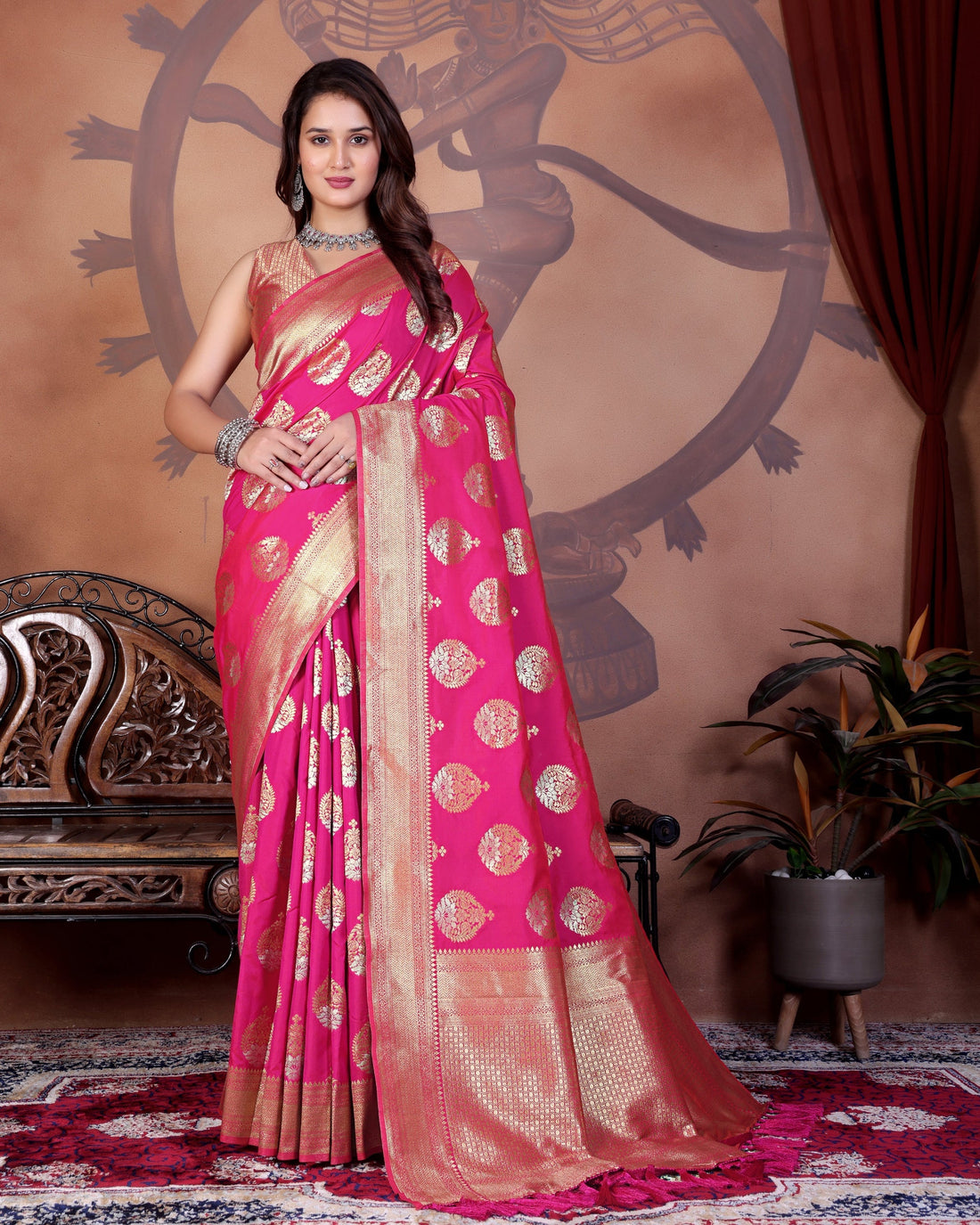
Premium Pure Soft Silk Sarees in India: A Symbol of Timeless Elegance
Megha MuleSilk has always been synonymous with luxury, tradition, and timeless grace in Indian culture. Among the wide array of silk variants, pure soft silk sarees have carved a niche for themselves, embodying the perfect blend of comfort and elegance. These sarees are known for their rich texture, effortless drape, and royal appearance, making them a staple in every Indian woman’s wardrobe, especially for grand occasions like weddings, religious festivals, and cultural celebrations.
This blog takes you on a journey into the world of premium pure soft silk sarees in India—exploring their origins, unique features, traditional significance, types, styling tips, and care instructions.
The Origin and Legacy of Soft Silk Sarees
India's silk weaving heritage dates back thousands of years, with historical records mentioning its prominence even during the Indus Valley Civilization. The knowledge of silk production and weaving has been passed down through generations of artisans, particularly in southern and eastern parts of India, where soft silk sarees continue to be handcrafted with great precision and pride.
Soft silk sarees are typically woven using fine mulberry silk threads. What sets them apart is their smooth, lightweight texture, making them more breathable and comfortable than other traditional silk sarees, yet equally rich in appearance. This makes them a preferred choice for women who seek comfort without compromising on opulence.
What Defines a Premium Pure Soft Silk Saree?
1. Fabric Purity
A premium pure soft silk saree is crafted from 100% natural silk, without any synthetic blends. The use of mulberry silk gives the saree its natural luster and luxurious finish. The feel of pure silk is unmistakably smooth and soft, yet durable and rich.
2. Lightweight Comfort
Unlike heavier traditional silks, soft silk sarees are easier to drape and carry. They do not weigh down the wearer, making them suitable for long functions or ceremonies where comfort is essential.
3. Elegant Weaving Patterns
These sarees often feature intricate handwoven designs, ranging from floral motifs to traditional temple borders. The pallu (the decorative end of the saree) is usually adorned with elaborate patterns and occasionally with shimmering zari work that enhances its festive appeal.
4. Cultural Relevance
Soft silk sarees play a significant role in Indian customs. They are often worn during milestone events like weddings, baby showers, religious rituals, and festive celebrations. Gifting a pure silk saree is also a tradition that symbolizes prosperity and goodwill.
Types of Pure Soft Silk Sarees in India
India's diverse weaving traditions have led to several regional variations of soft silk sarees, each with its own signature look, motifs, and weaving techniques.
1. South Indian Soft Silk
Soft silk sarees from southern regions are known for their bold colors, rich golden borders, and temple-inspired patterns. They often feature traditional motifs like peacocks, elephants, and mangoes. The weaving process may involve dual or triple-tone silk threads, giving the saree a striking visual appeal.
2. Handwoven Soft Silk
Handloom soft silk sarees, woven manually by skilled artisans, showcase intricate craftsmanship. Each saree can take several days or even weeks to complete. The detailing in handloom sarees reflects artistic expression, heritage, and an unmistakable sense of exclusivity.
3. Lightweight Festival Silk
These sarees are designed specifically for festivals and daily poojas. They maintain a traditional appearance while being easy to manage. Usually less heavy on zari work, these sarees come in subtle shades with elegant borders.
4. Modern Soft Silk Fusion
Contemporary designs have introduced minimalistic soft silk sarees with geometric patterns, pastel tones, and abstract motifs. These are suitable for modern-day events, office functions, and even casual celebrations, catering to younger generations looking for a fusion of tradition and trend.
Why Indian Women Choose Pure Soft Silk Sarees
Silk sarees have always been seen as a symbol of wealth, grace, and cultural pride. Here's why soft silk, in particular, is a favorite among women across the country:
-
Elegance with Ease: The soft drape and refined finish give a graceful silhouette without being difficult to handle.
-
Timeless Investment: Pure silk sarees do not lose their appeal with time. In fact, they are often passed down as heirlooms.
-
Versatility: From bridal wear to office parties, soft silk sarees can be styled in various ways to suit different occasions.
-
Cultural Identity: Wearing silk is often part of tradition during rituals, festivals, and weddings, symbolizing purity and divinity.
How to Identify a Pure Soft Silk Saree
Given the popularity of silk sarees, the market is flooded with synthetic imitations. Here are some ways to identify genuine soft silk:
1. Silk Mark Certification
Look for the official Silk Mark tag, which certifies the authenticity of pure silk products.
2. Touch and Feel
Real silk feels warm and smooth to the touch, while synthetic materials often feel cold or slippery.
3. Burn Test (with caution)
When a thread from real silk is burned, it smells like burnt hair and leaves a fine ash. Synthetic fabrics leave behind a plastic-like residue.
4. Price Check
Genuine pure silk sarees are expensive. Very low prices often indicate mixed or synthetic materials.
Styling Tips for Soft Silk Sarees
Styling a pure soft silk saree is all about balancing tradition with individuality. Here are some tips to elevate your silk saree look:
-
Choose the Right Blouse: Pair your saree with a contrast blouse or one with modern cuts like boat necks, halters, or elbow-length sleeves.
-
Accessorize Smartly: Traditional gold or temple jewelry pairs beautifully with soft silk. You can also try antique or handcrafted silver jewelry for a contemporary twist.
-
Belt It Up: Adding a statement belt over the saree gives a fusion look while accentuating your waistline.
-
Footwear Matters: Choose elegant footwear like embellished juttis, heels, or kolhapuris based on the occasion.
-
Hair and Makeup: A classic bun adorned with flowers or a soft braid complements the saree’s traditional vibe. Go for dewy makeup with bold lips or a subtle smokey eye for a regal finish.
